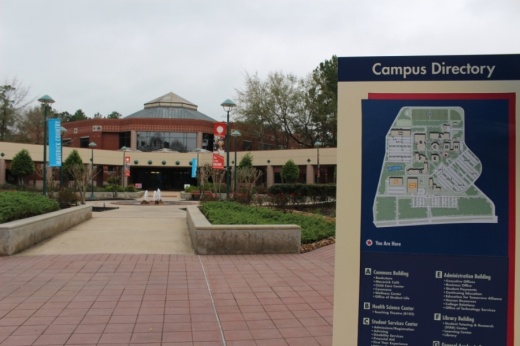“What happens when you have a situation like this, it exacerbates your weaknesses,” he said. “We have the largest online enrollment in the country for community colleges. ... You’ll be seeing us really focused on online going forward because ... this is not going to be the last time we have something like this probably in our lifetime, so we need to be prepared for it. The other thing is we’re really going to be focused on these workforce programs where we know that there’s a need, like health care for example.”
While spring enrollment has seen little change as of April 2 in spite of the coronavirus, Head said he anticipates about a 30% drop in summer enrollment, with classes beginning June 1. All summer classes will be moved online, likely excluding essential workforce programs, such as health care and paramedic programs, which could still meet on-site, he said.
Head said as of April 2, LSCS had seen a similar number of course withdrawals as last year although the date by when students must withdraw had been pushed back.
“We’re hoping that since students have already paid for it that they’re going to stick with us over this," he said.
LSCS announced March 12 it would initially suspend classes until March 23, later extending the closure to April 13 and most recently to at least April 30, Community Impact Newspaper reported. The college system has also canceled graduation ceremonies planned for May due to the coronavirus outbreak.
While most classes have been converted to online courses during the pandemic, workforce programs—those programs teaching workforce-specific skills to advance a career—will resume May 4, Head said, if stay-at-home restrictions are lifted. The hands-on classes, such as health care clinicals, construction trades and welding courses, are more difficult to be held remotely, he said.
“Right now the issue is workforce and trying to figure out how to do some combination of hybrid [classes],” he said.
As a result, the end of the spring semester has been pushed from May 8 to May 22, Head said, with a three-week minimester beginning May 11.
Looking ahead
Despite closed facilities, Head said LSCS is positioned well financially to weather the pandemic. He said the college system anticipates losing at most $15 million-$20 million. In comparison, after Hurricane Harvey in 2017, LSCS saw a loss of about $52 million, he said.“We’re kind of preparing for a worst-case scenario," he said.
LSCS is poised to receive the third largest amount of money for a community college system in the U.S. from the stimulus package, Head said. He said this totals about $28 million, half of which will be relayed to students through financial aid opportunities.
"The good news is it looks like we’re going to get about $28 million in stimulus money, which is going to help,” he said. “We also have reserves. Let me just say this: I think we have enough flexibility in the budget right now, and reserves are our last resort. ... We were in good shape before all of this started, and we’ll be in good shape after this, just because of the way we manage our business.”
Head also said the college system is still on track to launch its bachelor’s degree programs this fall as planned with about 150 applications received for the new degree programs.
As of April 2, LSCS had not furloughed or laid off any staff, and all full- and part-time employees are getting full pay, Head said. However, the college system has frozen hiring new staff for the time being and canceled convocation, graduation and various conferences, which have resulted in cost savings.
“Our plan right now is to refund students who drop because of the virus," Head said. "Going forward, we’re making a major effort to keep the students that we have and then welcome new students in because we’re going to have financial aid funds to help them enroll in school and get the entire community back on its feet."
This fall, Head said the college system could see an uptick in enrollment despite summer enrollment decreasing if history repeats itself.
“We’re going to get out of this; we will. The interesting thing about this is that our enrollments could go up. That’s what we normally see when the economy goes south," he said. "Back in 2008, we had double-digit increases after that. ... The jobs weren’t there, and people decided it was better to come back to school than do nothing at all.”
From summer 2008 to fall 2008, LSCS' total enrollment grew 78% from 28,876 students to 51,494 students, according to LSCS data, although enrollment grew 8.5% from spring to fall in 2008.
“What happens when the economy is good—and it’s been really good—people were not coming to school, especially directly out of high school or directly out of military because they could make money. But then you see as soon as you have a problem, if you don’t have a combination of education and experience, then you could get laid off," Head said.
Although the fall semester is slated to resume with on-site courses, Head said LSCS hopes to expand its online offerings long-term, regardless of how long the pandemic lasts.
“We already had plans to expand, not so much in Texas because we compete with other colleges, but Lone Star is known across the country, and we were already talking about offering classes online. We actually have people from all over the country taking classes, and we wanted to expand on that," Head said. "That’s the plan is for our enrollments to increase this fall. We’ll meet that demand. We have the money to meet that demand if it’s there for students.”





